The dead rose from their graves last week, but it wasn't for the Rapture
The dead walked among the living for the annual Sebastopol Cemetery Walk put on by the Western Sonoma County Historical Society
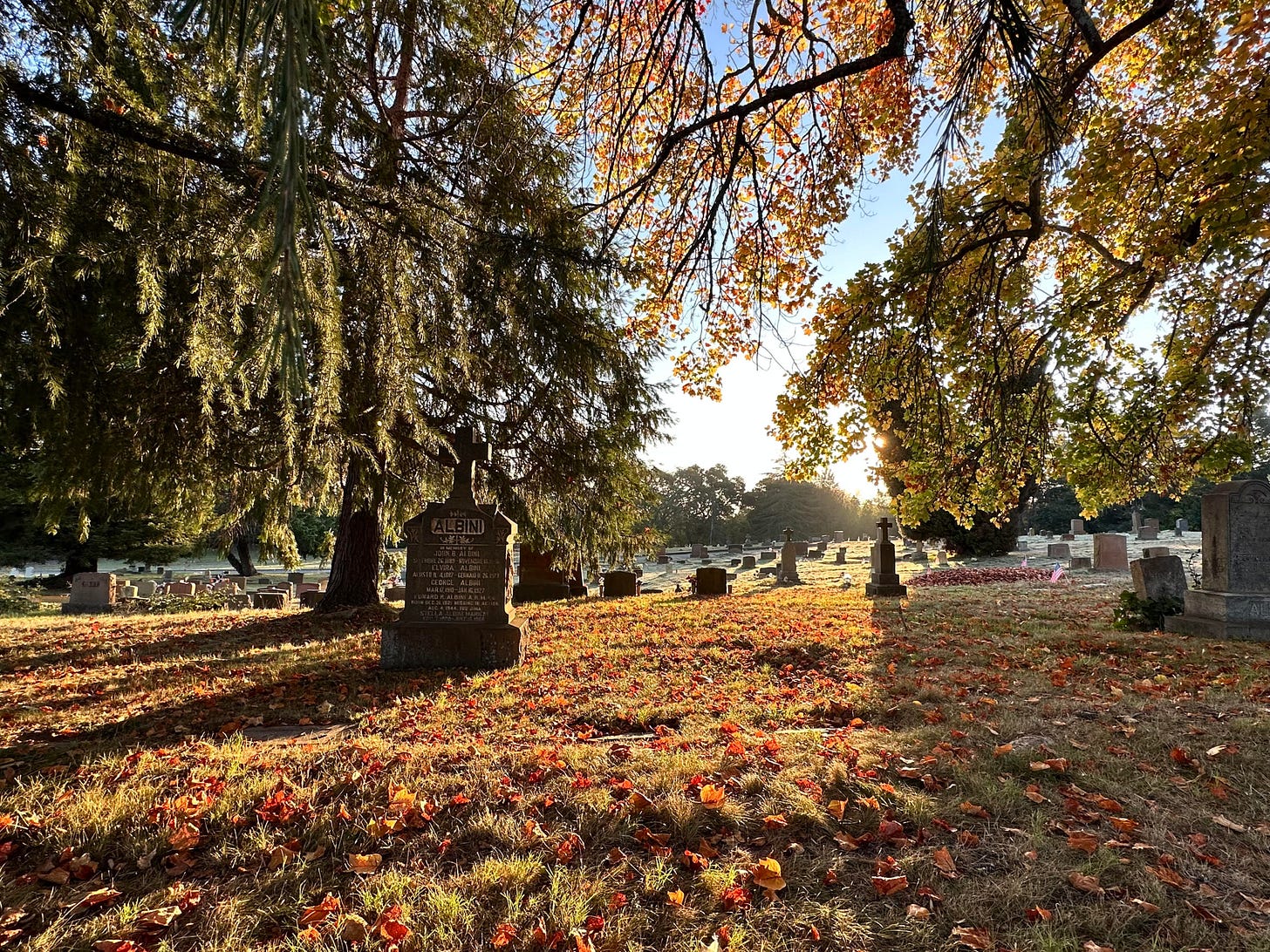
Photos of the Cemetery Walk by Mark Fernquest
One of Sebastopol’s most interesting small-town events, the annual Sebastopol Cemetery Walk, is a surreal affair. Modern-day Sebastopol folks dress up in period costumes like one of the dear departed buried at the Sebastopol Memorial Lawn, and then they act out a vignette from that person’s life at that person’s graveside. Like I said, surreal—but also an awful lot of fun for both the amateur actors and the spectators. That’s why it sells out early every year.
The event, which happened last Friday and Saturday, Oct. 3-4, is put on by the Western Sonoma County Historical Society (WSCHS) with a host of local volunteer actors and writers, some of whom are descendants of the people portrayed in the vignettes. The director this year was former Analy Theater teacher Starr Hergenrather. WSCHS’s executive director, Teresa Ramondo, oversees the whole affair and helps serve apple crisp to audience members at the end of the tour.
Local history fans and other participants gather at St. Stephen’s Episcopal Church, and then, accompanied by funereal music from The Hubbub Club, they trail up through the Luther Burbank Experiment Farm, with a brief stop to hear a story from the ghost of Luther Burbank. Participants then proceed up the hill to the cemetery.

Here’s who they met this year:
John Walker (1826-1895)
John Walker was the first American to settle in the Sebastopol area. Eleanor and John Walker gave what is now the Sebastopol Memorial Lawn property to the community to be used as a cemetery. John Walker lived in Sebastopol for 45 years and died in 1895. According to this year’s program, “He helped this place grow from wild land into the town of Sebastopol.” In this year’s vignette, John is gathering others to attend a funeral for his son, Willis Young Walker.
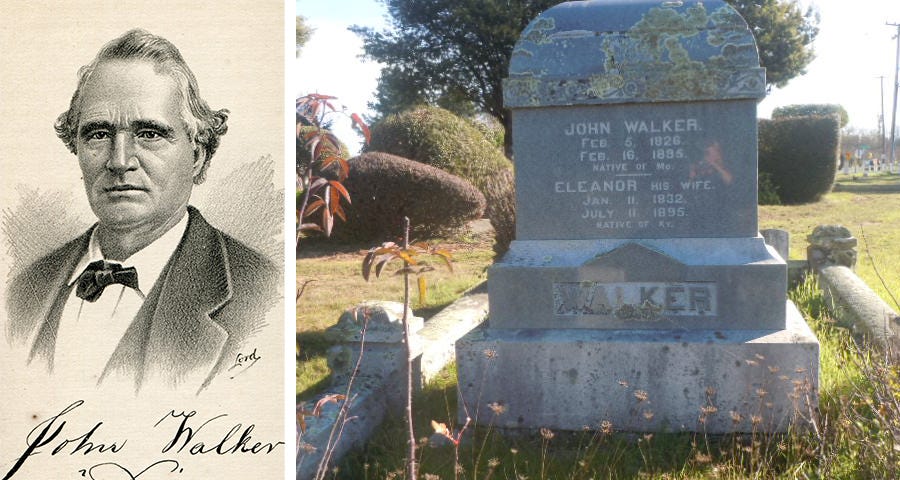
Marie Sugiyama (1935-2020)
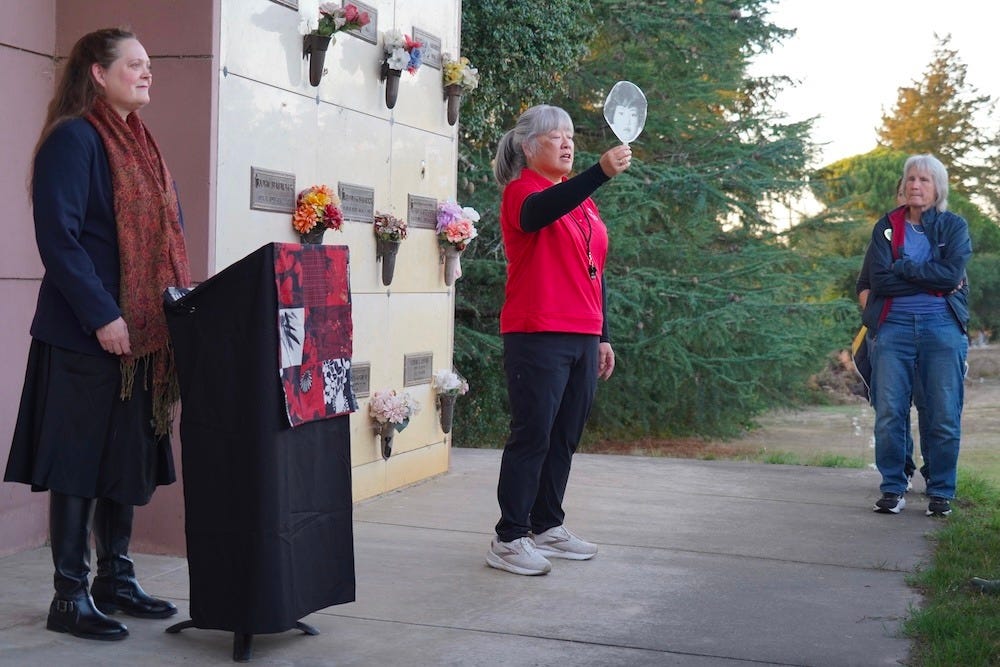
In the columbarium, there is a niche holding the ashes of Marie Sugiyama, who died on New Year’s Day 2020. She was a first-generation descendent of immigrants from Japan, who worked and farmed in Sonoma County. During World War II, when she was a little girl, she and her family were torn from their home in Sebastopol and spent the wartime years in the Amachi Internment Camp in Colorado. That experience had a profound impact on the direction of her life. In this vignette at the Cemetary Walk, participants attend her memorial.
Don Todd (1895-1971)
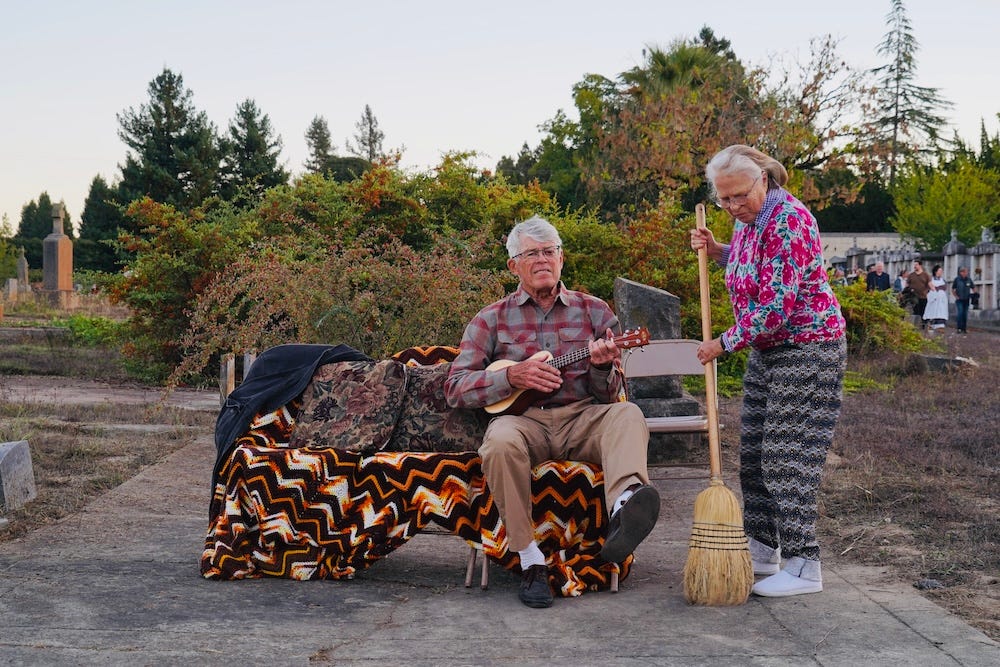
Don Otto Todd was born in Freestone. He married Martha Plomp from Holland. Martha didn’t speak English at first. Don always joked that he said yes to everything, and that’s how they ended up married in 1919. The Todds were well-known local musicians, playing in bands all over West County. Don was a gifted watercolor artist and professional house painter. The Todd family spent many summers traveling the U.S. by car, often visiting relatives in the Midwest. Their daughter moved to Missouri in 1955, and every year thereafter Don and Martha would drive out there to spend the entire summer. In 1970, they were slowing down and didn’t go. The following year their Midwestern family bought an old school bus and 10 of them drove from Missouri to Sebastopol.
Ida Samantha Coltrin Hunt (1859-1944)
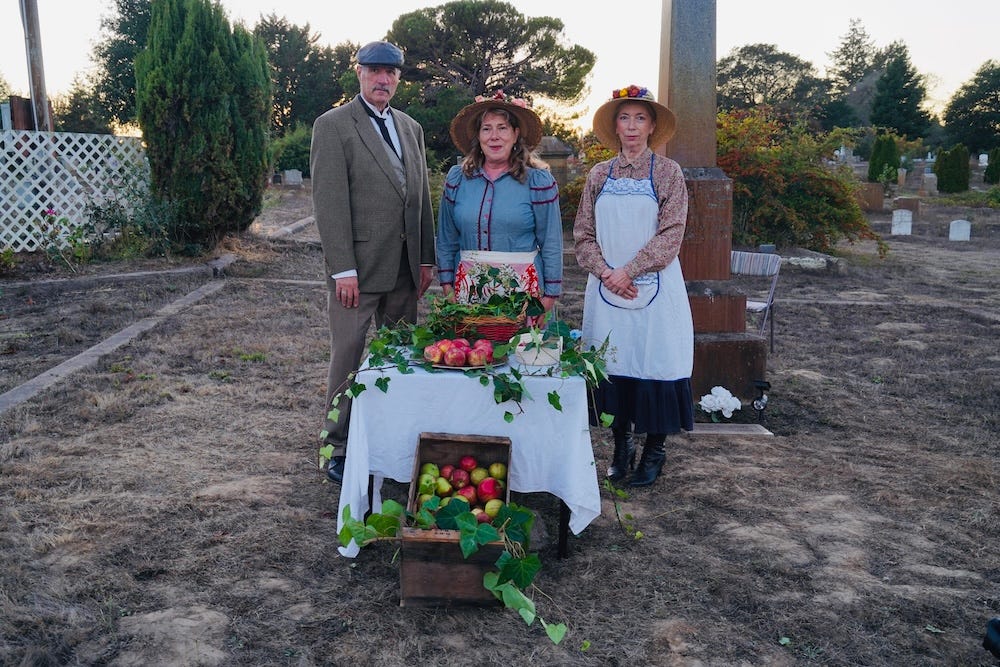
Ida Samantha Hunt was a schoolteacher at both Vine Hill and Mt. Vernon schools. She was the widow of Perry Griffen and then William Hunt. In this year’s vignette, she displays her apples with the help of her daughter-in-law, Mabel, at the Sebastopol Apple Faire, circa 1910-1911. Her parents, Hugh and Samantha Coltrin are also buried at Sebastopol Memorial Lawn.
Here is her obituary from the Sebastopol Times, Nov. 10, 1944.
Mrs. Ida S. Hunt, known to her many friends as “Aunt Ida” passed away at her home here Thursday morning at 6:30, after a long illness. Mrs. Hunt was born in Nebraska October 8, 1859, and came to California by ox team. She lived in Cloverdale and Geyserville for a while, coming to Sebastopol in 1872. In 1888 she married William Jessie Hunt, who passed away in 1907. She leaves one son, Grover C. Hunt of Carlisle, Pennsylvania, and a step-daughter, Mrs. Birdie Morford of Los Angeles. In addition, there are eight grandchildren, nine great grandchildren and two great-great grandchildren. Mrs. Hunt was a member of the Congregational Church. She was also a charter member of the Congregational Club, the Order of Eastern Star of which she was a past matron; the P.E.O.; and the Harmonae Club.
Guiseppe Martinelli (1862-1918) and Louisa Martinelli (1863-1940)
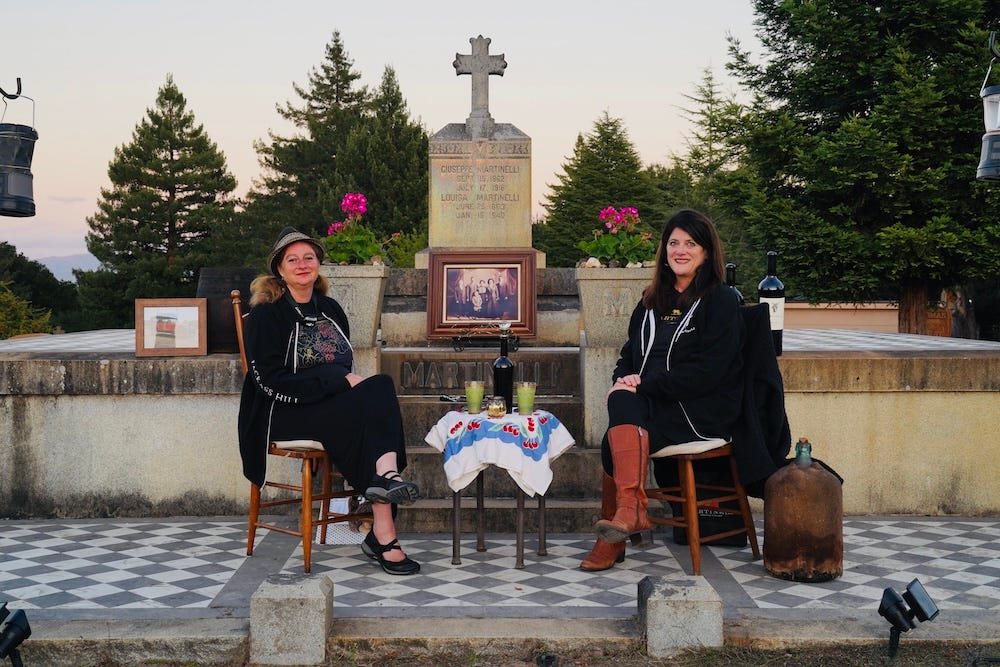
The Martinelli family has been growing grapes in the Russian River Valley since 1889. Giuseppe Martinelli, age 19, and Louisa Vellutini, age 15, eloped from a small Tuscan village near Lucca. Their journey across the Atlantic to the U.S. eventually took them to California, looking for land to farm and start a winery. After two years of Giuseppe working for vineyard owners and Louisa working in San Francisco as a waitress, they saved enough money to buy land near Forestville and started planting Zinfandel and Muscat of Alexandria grapevines. They had four children. The Martinelli descendants still grow grapes and make wine 140 years later. The 65-degree slope on which the family planted their vineyard is called Jackass Hill and remains the steepest non-terraced hillside vineyard in the country.
Coach Walt Foster (1915-2006)
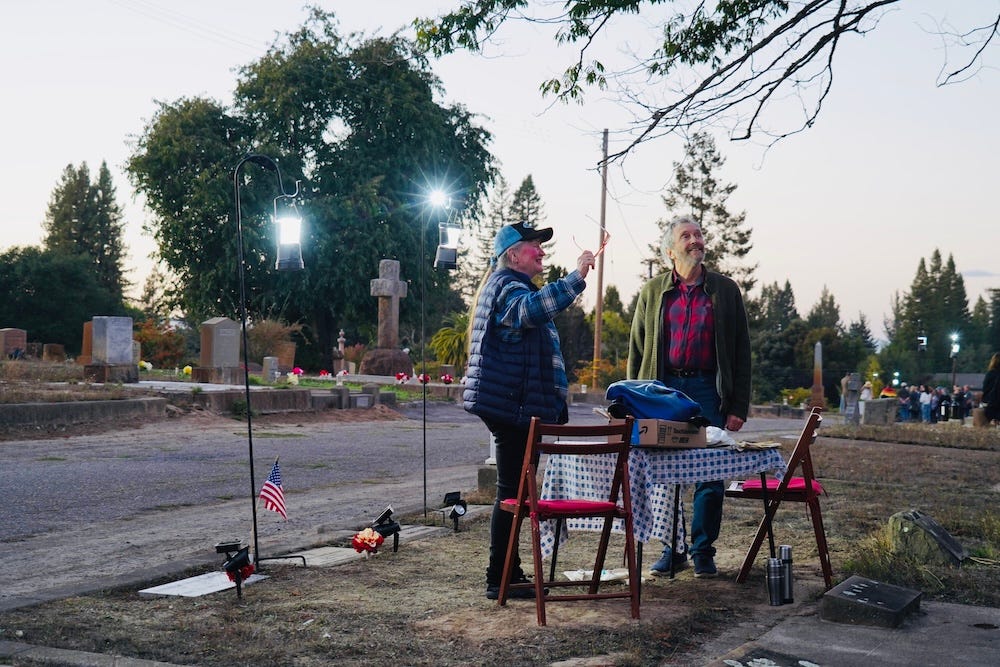
Analy Coach Walt Foster’s family has been prominent in Sebastopol for over 100 years. Walt Foster was born here in 1915, and many Analy alumni remember him as a teacher and coach. Two of his former students Gene and Elaine (played by Latefa Mineo and Paul Schwebel) finished off the Cemetery Walk with a story about Coach Foster, to the strains of the “Analy Fight Song.”
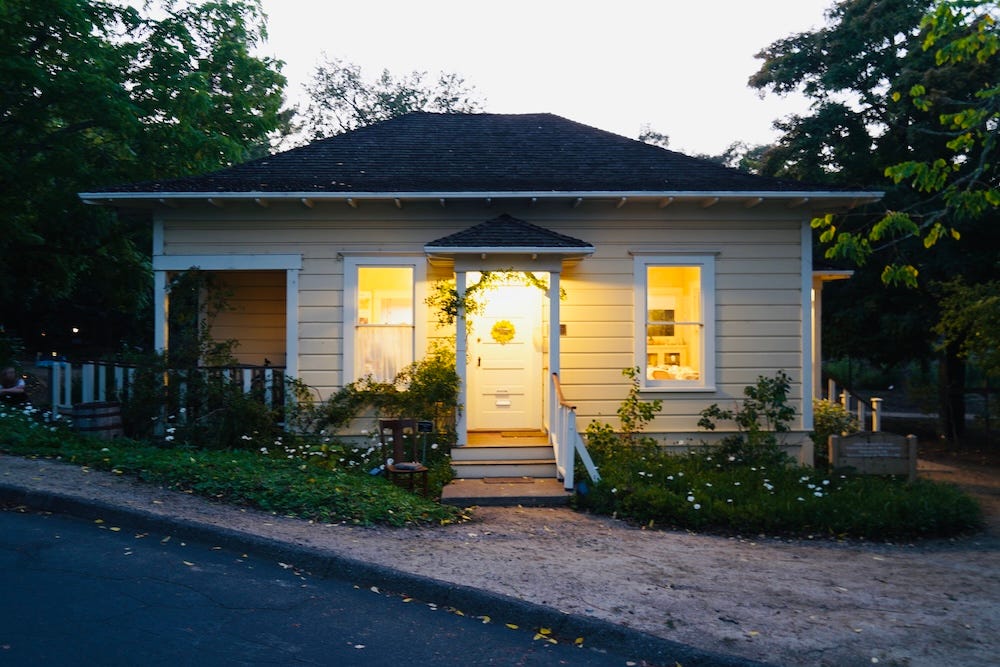
Information for this article was derived from the program guide to this year’s Cemetery Walk and from online sources.



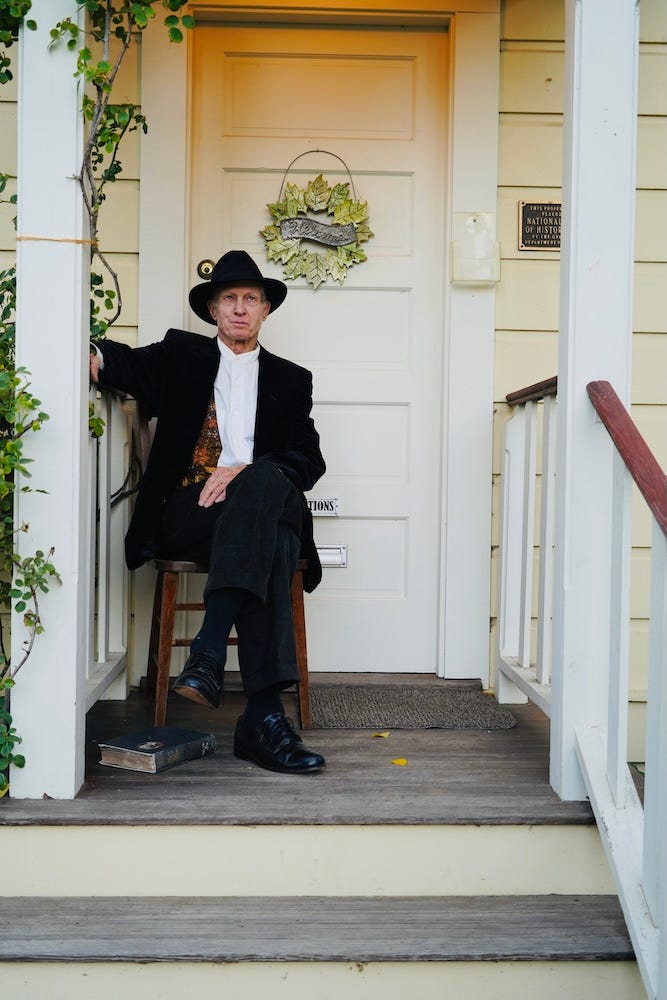
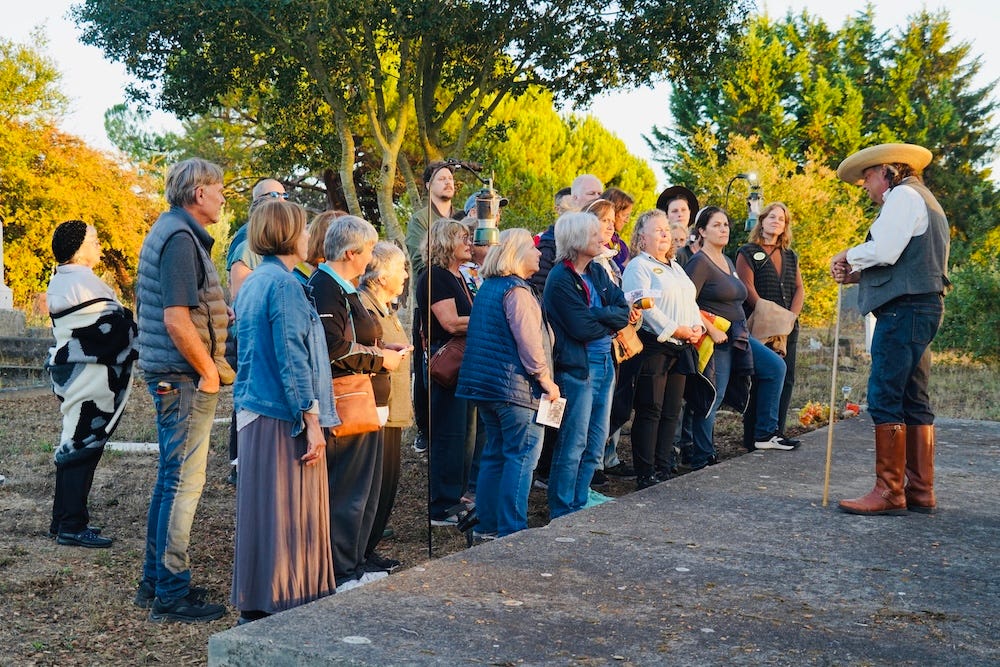

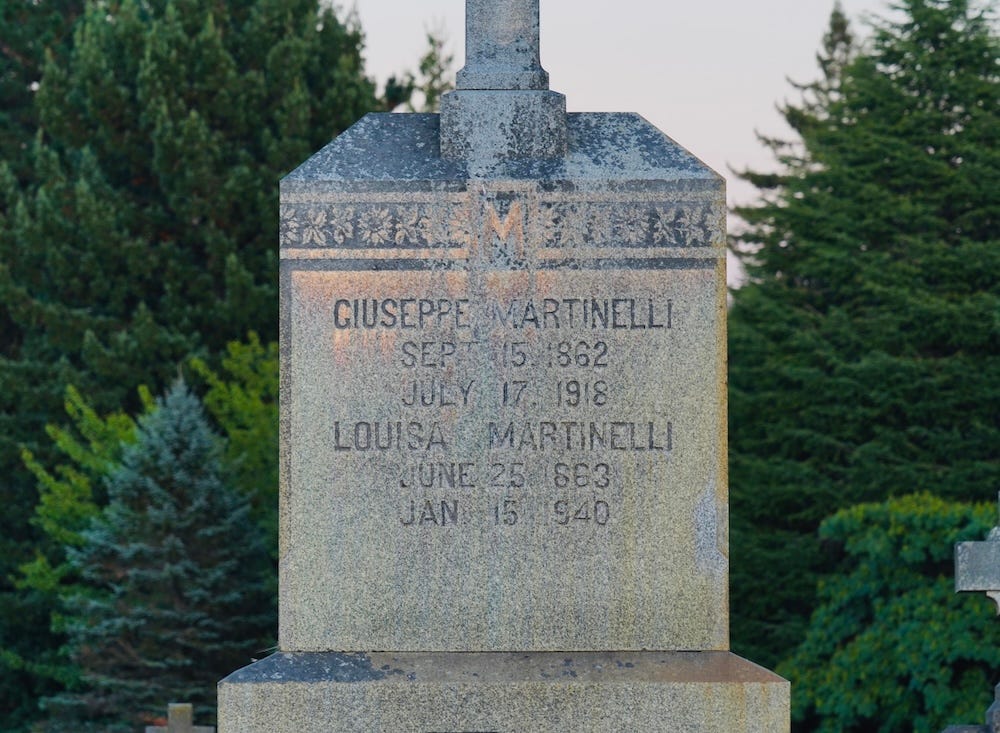


It was a wonderful evening full of enchanting stories about our town’s history. And what was especially moving was seeing six members of the Walker family in our group listening to their history at the John Walker gravesite.
On a side note, I did trip over a stone. It was a grave event! 😀
Lawrence Jaffe, who played John Walker the founder of Sebastopol Grange, is the current president of the Grange!